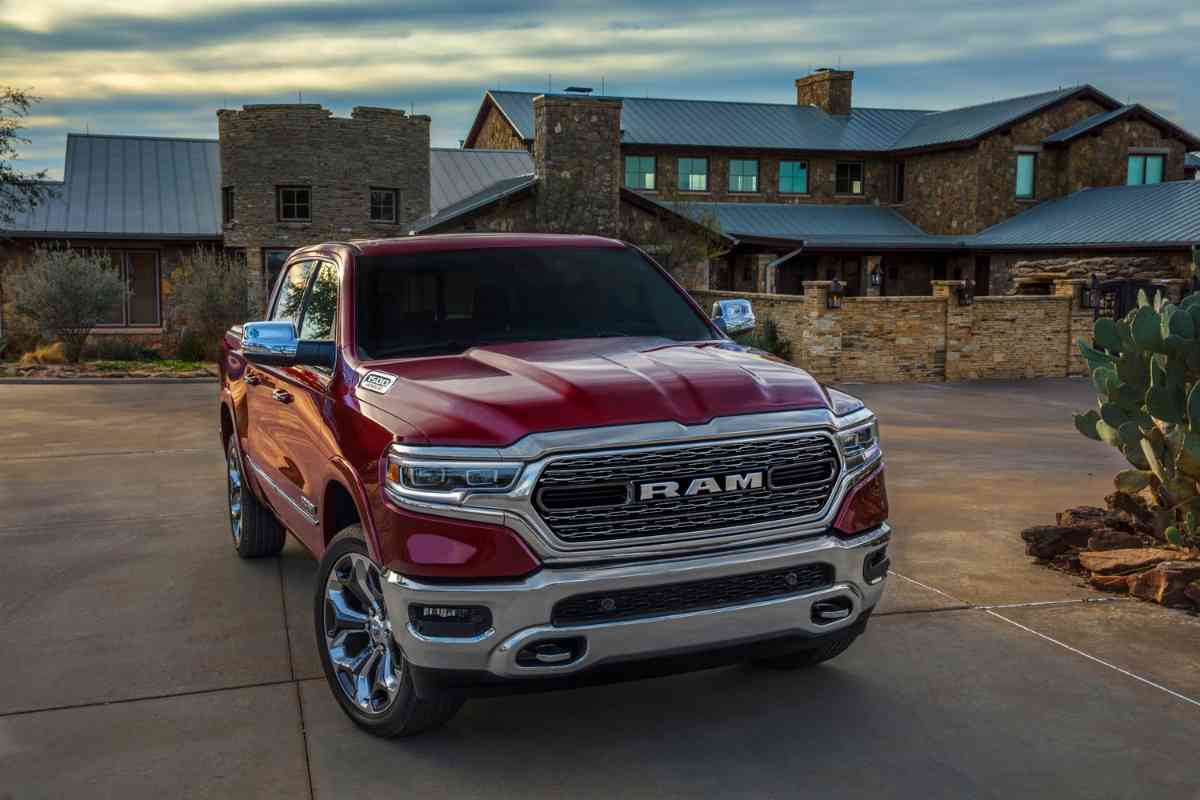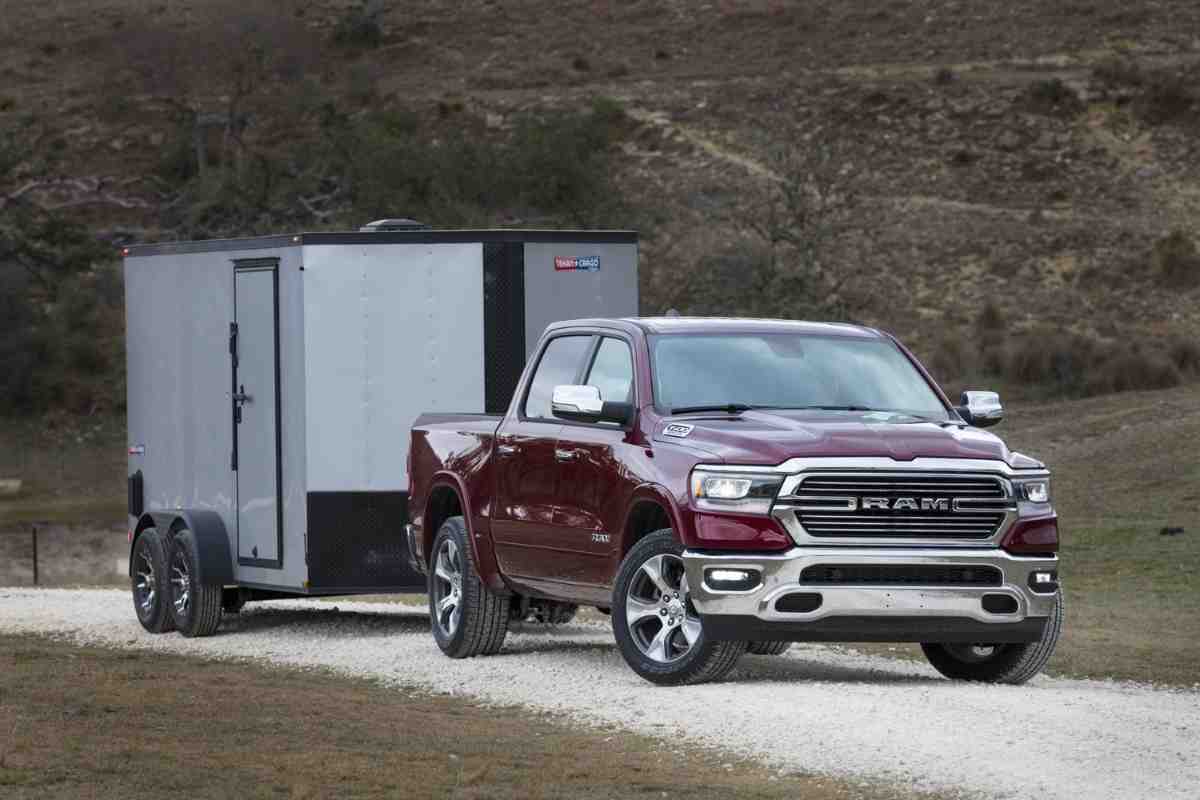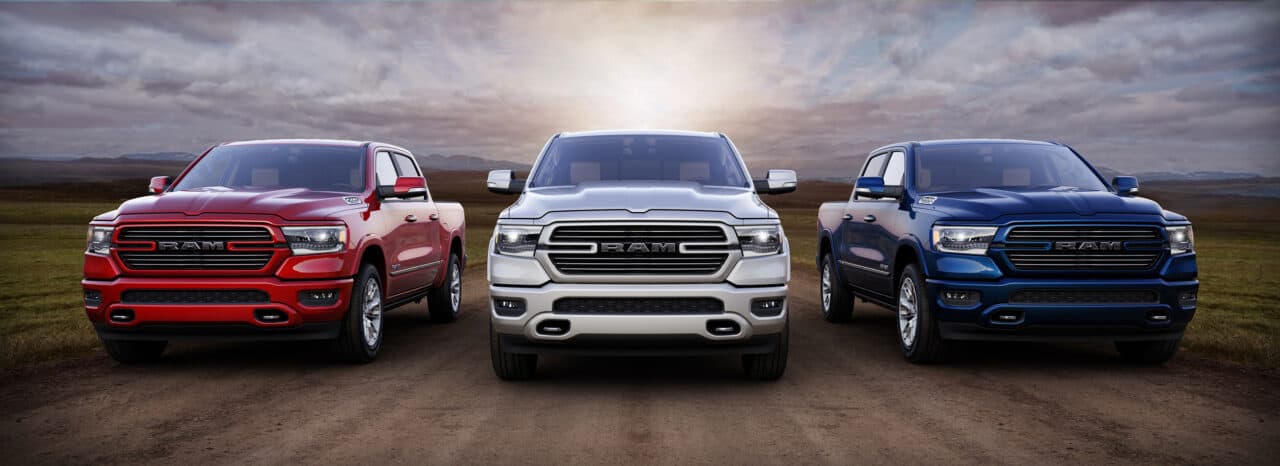Buying A Used Ram Truck Is Easy (6 Things You Must Know!)
Ram trucks are very popular. For years, we’ve thought of them as rugged and tough. These have shown they can tackle the most demanding jobs and excel in towing capacity and off-roading ability.
But, unfortunately, these trucks also have had a history of poor reliability. So does that mean you should avoid them? Not really. This article will discuss everything you need to know when buying a used Ram truck.

Related: Best Used Trucks – Our Top Picks. Did Ram Make The List?

“Drive Past Myths: Get the Real Deal on Car Buying!”
🚘 Uncover 13 Car Buying Misconceptions with Our FREE Newsletter!
Plus you will get our quick tips, expert advice, and myth-busting insights delivered straight to your inbox.
Subscribe now and make informed decisions without the detours.
“Experts Hate This! Learn the Car Buying Secrets They Don’t Want You to Know. Free Subscription!”
What to look for when buying a used Ram Truck?
The most critical issues with a used Ram truck include the transmission, power modules, and dash. Look for these when inspecting a used sample for a possible purchase.
Since this model line has existed for so long, other issues must be considered. But those we mentioned above are amongst the most critical.
We’ll discuss them and others in this article. But, before we get into that, we must explain how the Ram brand came to be. This is important because we are going to include older models as well.
Initially, Dodge manufactured the Ram as part of their truck line, which also included the Dakota. So, from the first Ram, up to 2011, you were buying a Dodge Ram, and the final number would define the size. For example, 1500, 2500, and special versions like the SRT.
But, in 2012, Dodge separated the truck department as an independent brand. This was due to two reasons.
First, the trucks were commercially successful, and having a unique brand allowed them to improve their models further.
Second, Dodge was migrating towards a particular set of vehicles, including the Charger and Challenger, both sportier and more aggressive street performers.
So, to tell the two apart, Dodge split the brand. So, if you’re looking for a truck that’s 2011 or older, it’s going to be a Dodge Ram. From 2012, it’s just Ram.
If we take both into consideration, then there have been five generations. The first Dodge Ram entered the market in 1981 as a basic work truck.
But, it’s worth noting that, from the start, the company decided to include diesel engines, which made it stand out from its competitors. When people are buying a used Ram truck, they usually aim for diesel engines.
If you’re buying a used Ram truck, keep in mind one thing. Finding a first-generation Ram in good condition is challenging.
Plus, it’s so essential that it wouldn’t be ideal for daily driving. But, if you’re looking for one, check for rust and the engine and VIN numbers match. Finding a Cummins-powered unit in good condition is a great buy.
This generation was long-lasting, lasting more than a decade. It was replaced in 1994, with the BR/BE second generation. This design parted ways with the boxy visuals of the past and included an aggressive grill and the famous headlights.
There were multiple powerplant options and a flurry of transmissions, including a six-speed manual, one of the first in the market in tricks.
The second-generation Ram was a commercial success, and it’s one to consider if you’re buying a used Ram truck . It won several awards and even appeared in films. But the fever would last until the turn of the millennium when Ford and Chevy outsold the Ram.
This generation was also famous for introducing plenty of special packages, including off-roading editions and the sportier SS/T package.
By 2002, Dodge realized they needed a change and introduced the third generation. It maintained most of the older design cues, improving on subtle details.

It’s important to note that Dodge dropped the live axles in the front and introduced independent front suspension. Improvements like these helped increase sales, but this generation was also plagued with reliability issues.
While Dodge continued to work hard on improving the truck, it’s not the most appreciated of the generations.
So, in 2009, Dodge introduced the fourth iteration, with plenty of mechanical and aesthetic improvements. These included new engines, improved suspension, and it still held on to the manual transmission, as competitors Ford and GM dropped theirs from the lineup.
The fifth, and the latest generation, entered in 2019, and it’s the most expensive, if you’re buying a used Ram truck. It came with several technological improvements, such as the Etorque, which included a belt-drive generator to increase torque in certain conditions.
Also, there are more driver aids and improved handling. These are excellent features to consider when buying a used Ram truck.
So, as you can see, there are plenty of Ram trucks out there to choose from. And this plays in your favor. In fact, in the following section, we’ll discuss one of the most critical aspects of buying a used Ram truck.

Depreciation
The word depreciation might throw many buyers off. However, if you’re buying a used Ram truck, it plays in your favor. All vehicles depreciate, but the Ram is a particular case.
In a recent study, iSeeCars found that the national average for depreciation is 34.3% in three years. The Ram 1500 ranked second, with 37.4%, only behind the Nissan Titan.
This depreciation isn’t good news for new models, but it’s great for the used market. Within three years, you can have almost 40% less cost when buying one. If you find a low-mileage vehicle, you’re saving quite a penny.
But, there’s a reason why this depreciation is so high. Though it’s a popular truck, it doesn’t have the best history for reliability.
So, in the following section, we’ll look at some of the most common issues with these vehicles. After all, buying a used Ram truck conveys some risk, as with every used car.
These are some common issues in used Ram Trucks.
When you’re buying a used Ram truck, you need to understand where it can go wrong. Some of the problems that we list here span multiple generations.
So, we will include the Dodge Ram truck as well. And, we’ll start with one of the most common issues that many models have had.

Transmission problems
If there’s a common factor with Dodge and Ram trucks, throughout the years, it’s that they all have transmission problems. And this situation has been prevalent since the second generation, with the introduction of various automatic transmissions.
But the situation became noticeable in vehicles ranging from 2000 to 2004. Models from these years saw a marked increase in transmission problems, so keep that in mind when buying a used Ram truck. Symptoms include a stuck shifter, missed gears, and jerky shifting while driving.
Other years with the same problem include the 2014 model, with a worryingly high number of complaints. So, if you’re buying a used Ram, it’s best to perform a detailed inspection of the transmission, plus ask for service records.
While it might not show any signs, you now know that, with Ram trucks, you need to keep an eye on the transmission and any signs of trouble.
Injection issues
This problem is particular to third-generation trucks. During the 2000s, many manufacturers started experimenting with different systems that improved fuel economy. One of the most popular approaches was to turn cylinders on and off, as the vehicle required.
Dodge created its Multi-Displacement System (MDS), and, in theory, it worked great. But issues popped up almost immediately, which you should consider when buying a used Ram truck.
Then the MDS starts to fail. Finally, you might feel a loss of power, and the engine might overheat.
Because the cylinders turn on and off, the temperature varies, causing them to expand and compress rapidly. This variation can lead to damage inside the engine.
Finally, there’s drivability. Many users complained that the MDS made the vehicle feel unnatural. Jerks and shunts can be expected. If you’re buying a Ram with MDS, especially in the 5.7L V8, it’s best to have an expert check its condition.
Shaky ride due to steering components
Also affecting the third generation, several users complained of a shaky ride. The reason for this was faulty steering components.
The first sign of trouble is a leaky steering rack. From there, steering can become irresponsive and slow. It’s best to check on ball joints, plus steering pinions.
When test-driving a third-generation Ram, you should pay particular attention to the feel. Any looseness should raise red flags.
4.7L V8 Overheating
We’re sticking with the third-generation models, but those from 2002 to 2007 in particular. While it came with several powerplant options, one in particular showed several issues.
The 4.7L V8 is not only underpowered, compared to others, but also lacked proper cooling. Due to this, it was prone to overheating; keep this in mind when buying a used Ram truck.
Dodge worked to fix the issues after 2008. So, if you’re buying a used Ram within those years, you have to check for excessive oil consumption and proper operating temperature.
Cracked Dashboard
This is an interesting issue because it’s shared across several years, not only in one generation. Due to low-quality plastics, the dash frequently cracks.
This happens particularly in vehicles that have been under the sun frequently, and the variation of heat and cold causes rapid expansion, leading to cracks.
But that’s not all, as users have complained that they’ve had to take down the dashboard to service aspects like the air conditioning. But, in doing so, cracks have quickly appeared.
And this is a bit off-putting, as some Ram trucks have shown to have constant AC issues. So, taking down the dashboard can be routine.
When you’re looking at a used Ram truck, check the dash for any signs of cracking. While this isn’t a critical aspect, a cracked or damaged dashboard could affect gauges.
Totally Integrated Power Module
At first, this problem has a simple solution. All you need is to replace it. But, the issues are so varied, it might be hard to pinpoint when it happens.
First of all, a Totally Integrated Power Module (TIPM) is a communications network. It also makes the decisions for the vehicle. So, with two such important roles, when it fails, the symptoms can be varied.
Some drivers have reported the wipers activating automatically. Others say that the headlights turned on and off at random. These problems can be severe hazards, depending on the driving conditions.
The average cost for fixing this issue (including replacing the module) can be about $1,200. The reasons for this TIPM failure include corrosion, damaged connectors, a faulty battery, and dirt seeping into the module. Though it can happen at any time, most drivers have reported it at about 88,000 miles.
These are some of the most common and important problems regarding the Ram trucks. However, other, less frequent issues can come up. So, it’s always best to have a certified mechanic aid you in inspecting any used Ram truck.
But does this mean that there aren’t any used Ram trucks worth buying? Not exactly. In the following section, we’ll show some of the better models to buy.
Best used Ram trucks to buy
It’s important to note that, just as we had done with the previous sections, we are including the older Dodge Ram trucks as well.
These are some of the best Ram trucks to buy, but it’s always recommended to go through a full inspection before buying a used Ram truck.
Fourth Generation, 2018
This particular year has shown very few mechanical issues. Plus, owner satisfaction is high. It’s an excellent option for long trips thanks to improved suspension, powerful engines, and a smooth 8-speed automatic transmission.
Fourth Generation, 2011
The last of the Dodge Ram trucks, this model had few recalls and issues. Most of the problems centered around electric components and were easy to fix. In addition, users have highlighted that it’s one of the most comfortable Ram trucks ever made.
Fourth Generation, 2017
This year, one of the last in the fourth-generation models, had excellent reliability, a smooth rider, and powerful engines. Plus, it has one of the lowest complaints registries of all models.
Ram trucks to Avoid buying
Though the Ram has shown several reliability issues across generations, the vehicles in this list have either shown the worst performance or the most accumulative problems. If you’re buying a used Ram truck, avoid these years.
Third Generation, 2003
This year, the Ram was plagued with transmission and intake issues. These problems led to poor performance and a high number of complaints. Plus, the ride was harsher than other models.
Fourth Generation, 2010
While this isn’t necessarily a reliability issue, it pertains more to performance. Unfortunately, this year had a notably underpowered engine, which translated to paltry fuel economy and performance.
Fourth Generation, 2013
This year, with the addition of new components, saw several recalls to fix electrical problems. Yet, ironically, this was the year the Ram earned MotorTrend’s Truck of the Year.
Fourth Generation, 2014
Awards don’t mean much if your truck is littered with recalls, engine issues, and transmission problems. And that’s what happened with the 2014 model. It had the most complaints of any Ram model, and most occurred within 50,000 miles or more.
Fourth Generation, 2015-2016
The following trucks suffered from the same issues after winning the Truck of the Year award in 2014. In fact, the company had to recall engines, transmission, and electronics.
Closing thoughts On buying a used Ram truck
Ram trucks are extremely popular, so it’s common for people to wonder if they’re worth buying when used. This article answers this question and delves into several of the issues that have plagued this brand.
It’s safe to say that, though it had sold hundreds of thousands of units, the Ram brand has had a bit of a reputation for lousy reliability. So, if you’re buying a used Ram truck, be sure to check for the most common issues, which we’ve detailed here.
Also, keep in mind that depreciation is considerable in these vehicles. So, it might work in your favor, especially after three years. So, factor this into your decision. While many have shown problems, there are some Ram trucks out there that are worth a try.
We’ve listed them here, but before buying a used Ram truck of this list, ask for service records and perform a complete inspection. So, if you want a Ram, hopefully, this article will help you choose the right one.
